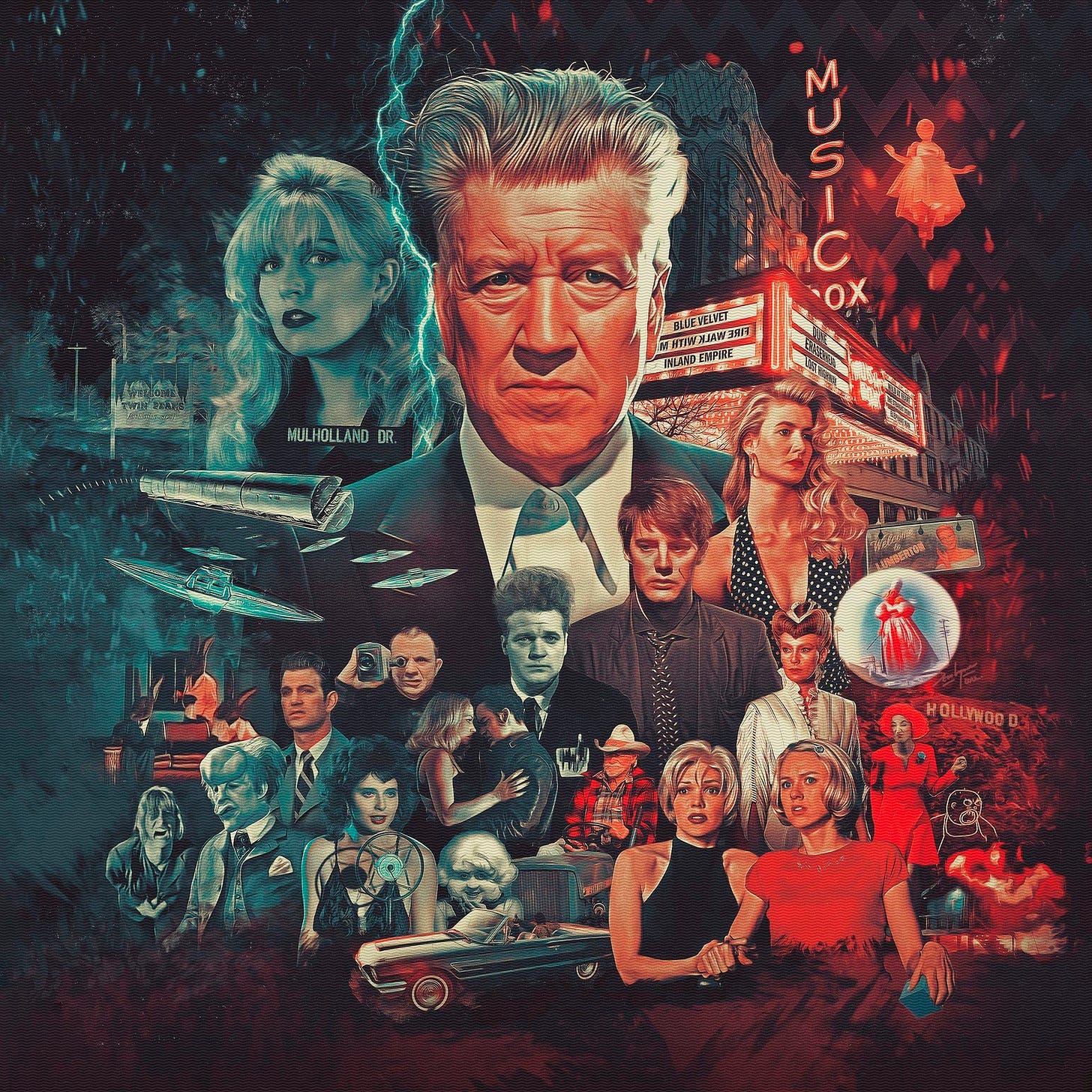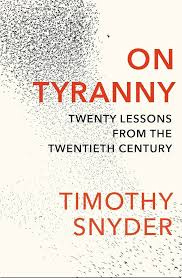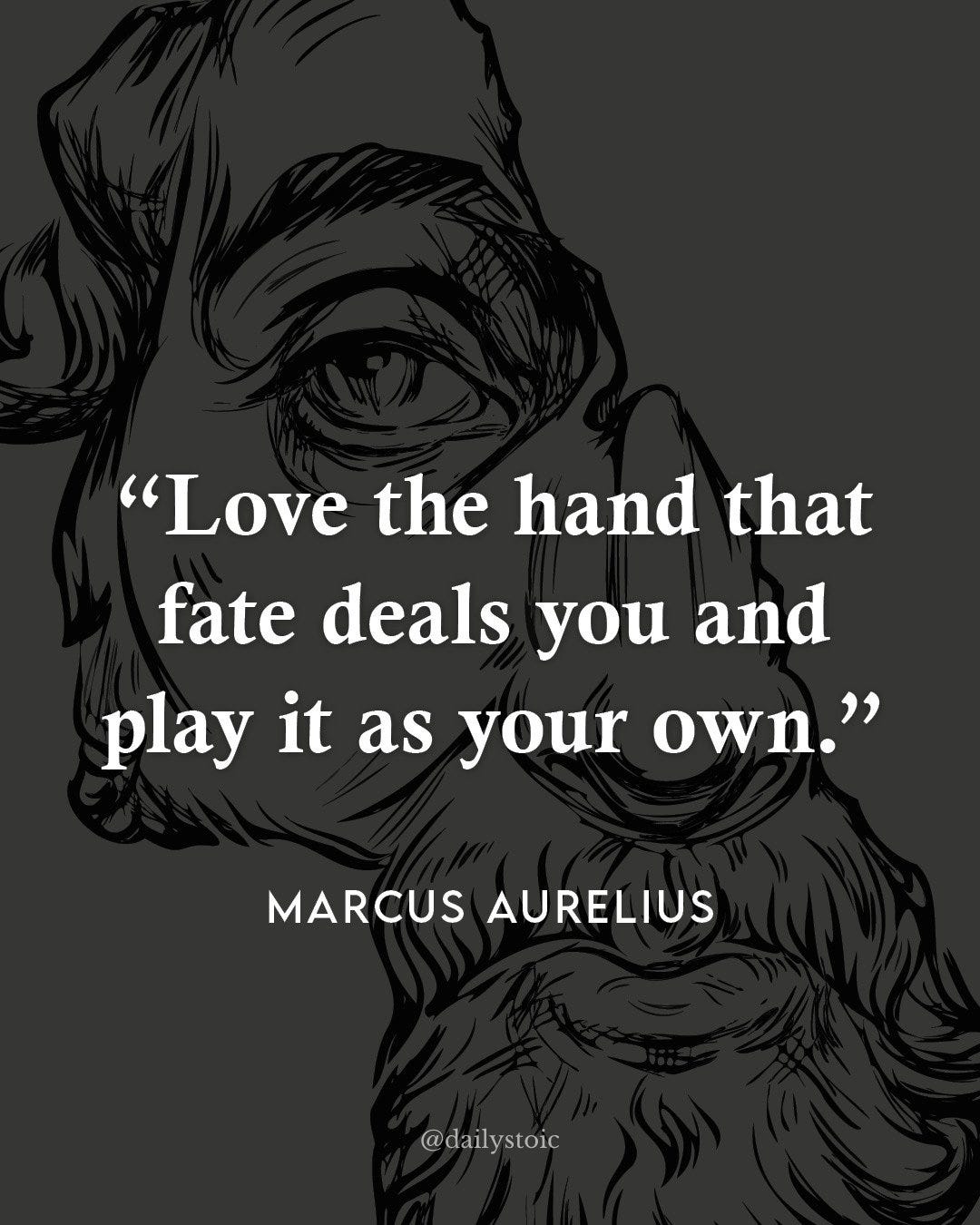How to Make Your Name an Adjective for Artistic Excellence
Make bold, unique, and confounding work that others want to copy, but can't.
Hello from Hancock Park! In the shadow of Paramount Pictures!
You want to know when a filmmaker is awesome at what they do?
It’s pretty simple. It’s when their artistic work is so idiosyncratic, so iconic that filmmakers, moviegoers, and critics around the globe transform the director’s last name into an adjective.
Only al handful of directors - Hitchcock, Kubrick, Fellini, Bergman - hold this honor. When we say Kubrickian or Felliniesque, it conjures up immediate and distinct feelings and cinematic imagery. You may not have seen any of their work, but the way critics and hip audiences apply these terms, you have a sense of what the work personifies.
David Lynch was one of those directors; “Lynchian”, for me, refers to a mind-bending, nightmarish, perhaps opaque, work in which, despite any confusion, you’re still satisfied by the potentially confounding, if not maddening, elements of the story. After watching a film by David Lynch, you know you’ve been in a fever dream rife with risque images, unsettling behavior, and meticulous, skin-shuddering sound design. And these are just a few of the aesthetic hallmarks of Lynch’s curious work.
LOST HIGHWAY (1997) was my first exposure to Lynch. Well, that’s not entirely true. I stumbled upon, was repelled by, yet was still compelled to suffer through multiple snippets of THE ELEPHANT MAN (1980) as a child. I have yet to see the film from start to finish (and, no doubt, never will). That movie scarred me, burrowed deep and twisted a bit of my soul. Yet, at the time, I had no idea who Lynch was (he hadn’t become a renowned filmmaker yet) and I don’t think I’ve ever seen the opening or closing credits.
By the time LOST HIGHWAY blew a hole in my brain, Lynch’s name was very much part of the cinephile lexicon. I had never experienced anything like that nightmare. And “experience” is the only way to describe a Lynch film.
When the jagged, jumpy image of yellow highway lines lit up by seeking headlights faded to black, I was plastered to my seat, unable to move. Jesus Christ on the cross! Who was this director behind this mysterious, sexy, depraved, violent mystery? A mystery that was left unsolved. One the viewer had to make a guess about. Could you do that in a film? I guess so, because that’s how real life is many times, it doesn’t provide answers. Lynch had just ripped down the curtains on my interior creative theater with glee. I need to know more about Lynch and his work.
I had missed the Twin Peaks phenomenon when it originally aired on ABC in the late 80s (I wasn’t into TV much then). And BLUE VELVET (1986) was notoriously difficult to find on the shelves at my local video stores. And one time when I did see it at a Blockbuster, the clerk felt the need to enforce the age requirements for an R-Rated movie.
Luckily, after walking out of the fabled Laemmle’s Sunset 5 still in awe at LOST HIGHWAY, Twin Peaks marathons were, at the time, routinely airing on Bravo, and Dave’s Laser Video in Studio City had multiple copies of BLUE VELVET on laser disc. Twin Peaks drills into your gray matter in an altogether different way: from the odd opening credits (incongruous for a murder mystery on every level) to the distinctive performances, and twisting maze of a plot.
In "Ride of a Lifetime”, Bob Iger’s memoir, he confessed that he forced Lynch to unmask Laura Palmer’s killer early in that second season. This was far sooner than Lynch and Frost intended. Lynch had countered with a plea that the audience wants to be immersed in the world he and Frost created, to be with those characters, and watch their lives spiral out of control. Sure, they eventually want to know what happened to Palmer, but not at the expense of the show’s central pull (the series was a ratings bonanza, gobbling up 15% of the nationwide audience in 1990). In essence, people wanted to linger in the Lynchian.
And who doesn’t? Mind you, the Lynchian aesthetic is not for everyone. The ambiguity, the spine-tingling/head-scratching nature of the stories, the odd characters, Angelo Badalamenti’s surreal scores, and how Lynch embraces the grotesque are a gut punch for those who want clean cinematic stories that wrap up neat and tidy without being tragedy.
But our lives are anything but “neat and tidy”; that’s a false narrative. It’s why the cliched idea of a “Hollywood ending” rankles so many. Most times we go to the movies for an allegory that provides some insight into our jumbled interior lives, to help us sort out the emotional chaos that our day-to-day reality inflicts, to make us feel seen. Yet, the psychic meteorites we experience while watching Lynch’s precisely orchestrated waking nightmares are, ultimately, comforting.
Lynch serves up the notion that the impenetrable and the unexplained aren’t isolated, one-time-only phenomena, but repeating occurrences we will face again and again at some time or another. And that there is not much we can do about the bizarre, the “stranger than fiction” aspects of life except ride out the shitstorm and not lose our shit in the process (which happens to many of Lynch’s characters).
These instances aren’t even life lessons, but they are instructive. Take BLUE VELVET, for example, the circumstances are trippy, unfamiliar to most, and inhabit the fringe of society’s norms. But are they? On a stripped down level, are they circumstances we can’t apprehend? We can, as long as we recognize there are always forces (people and institutions) beyond our knowledge or control exerting pressure on our lives that create mild to maddening frustration and invoke an inescapable sense of what the fvck is happening and why?
A Lynch film lets you know that you’re never gonna get an answer, or if you do, it won’t be satisfying. In fact, it’ll probably provoke more questions. Kafka’s “The Trial” falls into this category of fiction. This is what makes Lynch’s works magnetic. He puts the surreal nature of a dream (or nightmare) on screen and invites us to engage with it, utilizing our subconscious to placate our logical conscious mind. There is no right answer. There is no wrong answer. There’s your answer. This is the peculiar quality that propelled his work to such stratospheric heights in the artistic firmament. This is also what it means to be Lynchian.
HOW’S THE WORK?
What work? Hollywood has experienced a contraction that was unimaginable a decade ago. Maybe retrenchment is a better descriptor, because the economy of film and TV was irreparably broken by the advent of streaming. What was a considered a boon turned out to be a self-lynching.
What Japan did to Detroit [in the 1980s], Netflix is doing to Los Angeles
— NYU Professor Scott Galloway
I heard the other day that there were only 90 active writers rooms.
90!
And those 90 rooms are, without a doubt, top-heavy with upper level writers, have smaller total staff, and perhaps has one middle-level or lower-level writer, who probably aren’t getting a script. The pathway to showrunner from rising up the ranks is obsolete, gone the way of the stage coach in Detroit after Ford’s assembly line was running full steam.
During the WGA Strike of ‘23, I talked about the Pareto Principle aka The 80/20 Rule several times in THIN ICE issues, and how that inescapable principle would dictate the fate of the entertainment business going forward. The prime victim would be the number of shows poised for production. And let’s not forget many rooms go through the script writing process for a season’s worth of scripts only for the network pulls the plug.
Not sure what will come next. No one is, yet it’s all pretty grim.
However, there is a new episode of COMICS ROT YOUR BRAIN. This one covers Dean Motter’s MR X, a retro future scifi mystery noir originally written and drawn by Los Hermanos Hernandez of Love and Rockets fame. The comics premise revolves around a disgraced architect whose invention — an entire city — needs to be fixed, because it’s driving its citizens insane.
And I’m having my space opera comic recolored, more on that when I get some of the painted pages.
CHEAP DOPAMINE
In the current political climate, it’s a struggle to blot out the churn, chaos, and outrage. Reading is the one activity that I’ve been ratcheting up the last four months. Social scientist Jane Elliot (of the infamous, yet crucial Blue Eye/Brown Test on racism) recommended “On Tyranny: Twenty Lessons from the 20th Century” by Timothy Snyder.
All I can say is READ IT.
It’s short.
It’s potent.
It’s vital.
It’s a handbook for the 2020s and beyond (despite being published in 2017)
HERE’S MUD IN YOUR EYE
A Wise Man Was Asked
What Is Anger?
He Gave a Beautiful Answer
It Is The Punishment We Give To Ourself, For Somebody Else's Mistake
That’s all party people!
Be seeing you!






It is interesting how creators can climb a difficult path and find a partial plateau. They stay at this halfway point and never push themselves to reach the peak. Being great involves uniform and continuous work—not a flash or spark, but something as new and unique as it was in the beginning. Each project reveals more and more of what is new and different. km